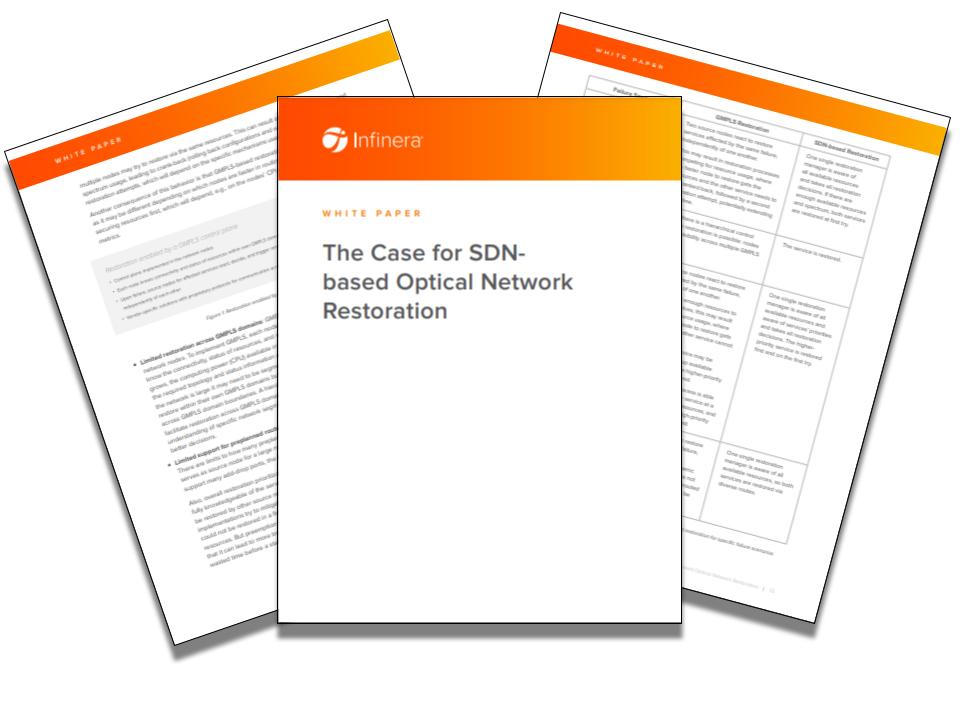Fibre optic networks are essential for the volume and speed of data that is transmitted today. This infrastructure is the backbone of telecoms and datacoms networks, and the reason that people can communicate and work remotely, stream and game. Its importance will only become more pronounced with the emergence of evolving technology such as AI, and the advanced capacity demands it will bring.
The essential nature of optical networks means that if something goes wrong, the consequences can be wide-reaching, with the disruption of services that rely on high-speed data transmission. These include internet access, voice, and video communications, leading to outages, delays, and loss of connectivity. Businesses may face significant financial losses, particularly in sectors like stock trading, e-commerce, and cloud services, where downtime can result in missed opportunities and reduced productivity.
What’s more, critical infrastructure such as healthcare, emergency services, and power grids also depend on optical networks. Failures can delay emergency response, compromise patient care, and disrupt utility management. While operational downtime in industries such as manufacturing and logistics may cause delays, inefficiencies, and increased costs. And this is without the potential customer dissatisfaction, brand damage, and even regulatory penalties that service providers can risk.
Why is optical network restoration important?
Failure can occur for a number of reasons, including physical damage caused by handling, construction mishaps or environmental conditions; loose or damaged connectors; signal misalignment; contaminated end-faces; and sometimes issues with the hardware. Operators need to ensure a quick and efficient solution that fits their network infrastructure, and the more traditional optical network restoration methods, while historically effective, now have certain limitations, particularly in the increasingly common open optical networks that combine equipment from multiple vendors.
Teresa Monteiro, Director, Solutions Marketing at Infinera explains: “There are not many optical network restoration approaches that work in open optical networks. We see more and more interest and even some level of adoption in that type of architecture, because operators are more and more concerned about having a resilient supply chain, so they have multiple sources for the equipment in their network. If they want a restoration solution in their network, they should choose a solution that supports a multi-vendor environment”
The limitations of traditional network restoration
Past optical network architectures leveraged centralised optical transport network (OTN) switching and a distributed generalised multiprotocol label switching (GMPLS) control plane, in which source nodes are responsible for routing services, to deliver reliable optical restoration. But with trends towards high-capacity coherent optics, migration away from OTN switching, and a move towards openness and to IP traffic over dense wavelength-division multiplexing (DWDM) systems (IPoDWDM), there is limited restoration support provided by GMPLS and a new restoration approach is needed
As Monteiro explains: “We've been talking about software defined networking (SDN) for decades, and a lot of the operators somehow lost hope in these types of solutions. But the fact is, slowly, software automation is finding its way into the networks. And if you look at it, a lot of this automation has exactly the same principle as SDN and it’s being adopted in ways that are less about theoretical control and more about pragmatic automation, which automates what can be automated, and customises where standards don't allow you to fulfil all use cases.”
The real strength of SDN-based restoration, according to Monteiro, lies in its ability to work as a complementary tool to existing restoration methods. She says: “There are more and more operators adopting automation in the control systems, which is what would be called an SDN framework. So, we should also look at SDN-based restoration and its advantages, or the way it can complement existing restoration methods. It doesn’t have to replace traditional methods entirely but can fill gaps where those methods have shown weaknesses.”
The benefits of SDN in modern optical networks
The central advantage of SDN-based restoration, Monteiro explains, is the ability to have a single, centralised controller, an entity with a global view of the entire network. This controller is able to monitor all aspects of the network in real time, from the availability of spectrum and physical resources to the status of various services and their priorities. “There are no limitations in terms of scaling because you can always add more CPU to your controller. This allows for a much more efficient decision-making process when it comes to restoration,” she says.
In contrast, traditional distributed restoration methods make decisions based on the information available at the local level. Multiple nodes, each reacting to a failure independently, might not have the necessary context to make optimal restoration decisions. "With SDN-based restoration, you avoid these limitations because the controller has a complete, real-time view of the network and can make more intelligent decisions about how to restore services," Monteiro says. This centralised approach ensures that restoration decisions are based on a comprehensive understanding of the network’s current state, resulting in more efficient responses to failures.
Infinera’s SDN-based restoration solutions
Infinera offers its own suite of software solutions designed to help operators implement SDN-based restoration in their networks. These are flexible and scalable and designed to work in both single and multi-vendor environments. Says Monteiro: "Our optical domain controller can be installed to manage both Infinera and third-party equipment." This controller offers a user-friendly graphical interface that allows operators to easily configure restoration settings for each new service they create. Operators can prioritise services, set restoration constraints, and customise the system to meet the unique needs of their network.
The software is highly programmable and can be tailored to respond to a wide range of triggers, from network alarms to external data inputs such as weather forecasts. "You have an infinite level of programmability," Monteiro continues. "You can set complex restoration triggers based on network-wide conditions, which allows for much more sophisticated restoration strategies."
For example, a temperature alarm at one node might trigger a restoration action at a completely different part of the network, based on learned patterns of failure. This kind of flexibility is not always possible with traditional, node-based restoration methods, which only have access to local information.
The future of open networking and automation
Looking to the future of optical networking, Monteiro believes that the trend towards openness will only continue. She points to the growing trend of operators deploying optical plugs directly into routers and servers, bypassing traditional transponders. This shift, she believes, will further disrupt the market by creating a truly mixed vendor environment, where operators will no longer be reliant on a single vendor for all their networking needs.
"I think we’re going to see more and more operators adopting open networking and automation," Monteiro predicts. "And when they do, they’ll realise the full potential of SDN-based solutions like the one we’re offering. It’s not just about restoring networks; it’s about building more resilient, flexible networks that can adapt to whatever the future holds."

Read the latest White Paper from Infinera to find out in more technical detail about this improved approach to optical network restoration, based on an SDN control plane. This approach aligns with current networking trends, including IP traffic offloading from the OTN layer, adoption of network layer disaggregation, and increased network automation.


